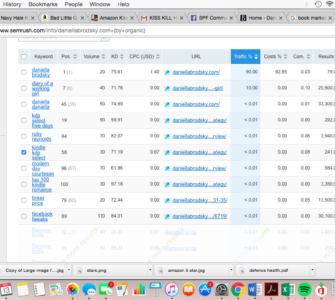When I had fewer years of fiction writing under my belt, I first recognized my attraction to old books. I can pinpoint the exact scene: it was my first visit to the Russell Library, in Middletown, Connecticut, USA, where I had recently relocated. This small town gem seemed a new universe to discover, having lived on Planet Manhattan for so long. And immediately I fell in love with this library, with its stained glass windows and creaky stacks, pretty courtyard and high, church-like ceilings (and I’d soon find out, the world’s best program director, Suzanne Eliot). I even loved the 70s era throwbacks like the neon teen reading area sign, and the video tape rentals.
fewer years of fiction writing under my belt, I first recognized my attraction to old books. I can pinpoint the exact scene: it was my first visit to the Russell Library, in Middletown, Connecticut, USA, where I had recently relocated. This small town gem seemed a new universe to discover, having lived on Planet Manhattan for so long. And immediately I fell in love with this library, with its stained glass windows and creaky stacks, pretty courtyard and high, church-like ceilings (and I’d soon find out, the world’s best program director, Suzanne Eliot). I even loved the 70s era throwbacks like the neon teen reading area sign, and the video tape rentals.
I took out a load of old books—so many that they elicited plenty of commentary—and I remember having gone up and down the stacks, pulling out fiction and non-fiction volumes, astounded by their retro cover designs, their fonts, the historical references, the styles and cultural views that have since changed. Even the fonts and slight changes in language made me feel I’d stumbled upon a portal to a whole new world of inspiration. Who knew this about Middletown, CT? Look, I was hooked—doomed to a future of library late fines to beg my way out of. At any one time you could find a volume of John Cheever, of How to Fight Fires, of How to Decorate the Shabby Chic Way shimmying around in my trunk, so I could look through them wherever I’d be working.
I’d flip through these books and soak them up, unsure, at the time, of what I was looking for, or what I might spit out as a result. What would result was an intense period of inspiration, the meat of which, I was unsure how to integrate into my work in anyway other than direct quotes, which felt clunky and not exactly what I was after. It was frustrating, but I recognize that period now as one of the most exciting kinds of spots a writer can find herself in: it means you’re on the brink of learning that there is a whole load about writing that you didn’t realize there was to learn. Sure this sends you into embarrassing periods of floundering with language, craft, or usage, such as overusing metaphors (just ask my editor), but once you squeeze-in and adjust this new knowledge into your existing tool kit and style, you’ll see the exciting results, the marked improvement. With any luck this will happen to you over and over again, and you’ll never stop learning.
Even before I knew exactly what I’d do with them, my interest in old books grew, became a bit more focused—I’d get that magical pull toward a book and know for some reason I was to read it. I continued collecting these volumes—at antique stores and from friends, some of them musty and probably introducing unhealthy spores into my lungs (I smell them now before taking them home). They called out to me and I knew the effect they had was profound, and hoped that eventually I could make something happen as a result.
Funny enough, one day I did. I was reading a non-fiction book I’d acquired for a quarter at the Salvos, noting my own fascination at the defiance of guppies at being easily classified. There was something beautiful and poetic in the fact that there are so many color, pattern, form, or shape varieties of this otherwise ho-hum fish, wasn’t there? If I loved this little tidbit, could find something meaningful in an extraordinary finding about something generally written off as ordinary, wouldn’t others? I lay the book alongside my laptop in a stroke of inspiration. It was so natural, the way my character emerged in an aquarium, with her infant son—her husband having deserted them on their Toronto family trip to go to the Hockey Hall of Fame—only to find out something insightful about her own life from the simple little guppy. Aha!
Now, these aha moments happen to all writers about different technical issues, and at different paces, and for the most part, there seems to be no rhyme or reason about what appears obvious to one author, and a constant struggle for others. For some it’s pacing, for others it’s inspiration, and others still, it’s dialogue. I’m convinced it’s in our hardwiring. We’re all different, which is what makes the whole thing so darned interesting after all, gives us all our different voices, different stories, and different takes on the same old stories.
All these years later, inspiration comes to me so often it’s a little off-putting, and sometimes inconvenient. For instance, someone can be telling me something terrible, even about a personal tragedy, and while I’m sympathetic, there’s a part of me shamelessly breaking off, thinking, Oh God! Get this down quickly! It’s perfect for your character’s personal growth! The inspiration comes on in a little delicious wave, the way it did with the books, and you just know—start underlining, jotting down, tearing out that article! Do not hesitate and instead try to memorize a thought that came from a dream late at night. You’ll miss something, and you’ll be pissed; believe me. I’m still waiting to remember a “brilliant” insight from a few months ago; I remember what it was about, where I was going to use it…I’m only missing what it actually was.
Once you fine tune your inspiration filter, you are so open, so sponge-like, it becomes more about finding the time to use it all. But that doesn’t mean you’re without challenge; it just means you’re already aware of the next thing you suck at and making all the wonderful discoveries and mistakes that keep the art of fiction so richly consuming.
My latest stroke of inspiration is certainly one I couldn’t have come across anywhere else except in Canberra. I’m working on really filling out my male characters; I’m so much better with women, and I look up, from my table at my local café, and from a pile of magazines one with pictures of normal looking guys, not models, stares back at me. This is just what I’m looking for, isn’t it? I scan the names, the photos of all these businessmen in B2B in Canberra, and without even looking at the man’s name, I know in this headshot, I’ve found the father of my heroine. It’s only later, when I ask the café proprietor if I can take the magazine home that I realize who it is. “John Stanhope?” she asks, clearly not feeling the same magic in the ACT Chief Minister’s fluffy hair, professional yet personal, groomed but human features as I am. But that’s precisely what’s so great about this art thing, isn’t it? It’s the fact that only I can tell a story the way I would tell it. In her story, the dad might look like Tony Abbot, or Barack Obama, but of course, he wouldn’t be the same dad at all…he’d be a man created through her own view of life, a composite of her interests, acquaintances, experiences, and vision, someone unique to her alone. What’s your greatest/funniest/most unique inspiration source? How do you integrate it into your work?



Leave a Reply